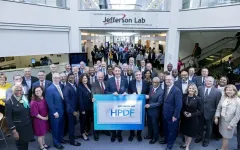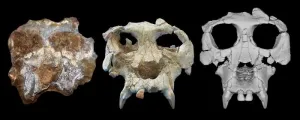(Press-News.org) Embargoed for release until 5:00 p.m. ET on Monday 16 October 2023
Annals of Internal Medicine Tip Sheet
@Annalsofim
Below please find summaries of new articles that will be published in the next issue of Annals of Internal Medicine. The summaries are not intended to substitute for the full articles as a source of information. This information is under strict embargo and by taking it into possession, media representatives are committing to the terms of the embargo not only on their own behalf, but also on behalf of the organization they represent.
----------------------------
1. Information about abortion care largely omitted or buried on 80% of health systems’ patient-facing websites
Lack of disclosure may contribute to stigma surrounding the procedure
Abstract: https://www.acpjournals.org/doi/10.7326/M23-1389
URL goes live when the embargo lifts
A study of health systems’ websites found that despite being a routine procedure at many hospitals, abortion is not mentioned by almost 80 percent of health system websites. The research report is published in Annals of Internal Medicine.
Patients often rely on online resources to learn about medications and procedures, including abortion. Online searches for abortion services are becoming more common after the Dobbs Supreme Court decision. Patient-oriented webpages may play an important role in patients locating abortion providers, learning about the procedure, and scheduling care. However, it is unknown whether hospitals and their health systems offer these online resources.
Researchers from University of Pennsylvania Perelman School of Medicine and Harvard Medical School studied websites of 222 U.S. hospitals in states without extreme abortion bans, including those with specialized abortion training programs, to measure how often they offer information about abortion and its provision at their facilities compared with colonoscopy, another common ambulatory procedure performed in both outpatient offices and hospitals. They found that 79.4 percent of patient-facing websites did not mention abortion, compared with 11.1 percent for colonoscopy. When the websites did mention abortion services, the information was found a mean of 0.5 pages lower in search engine results. The authors also report that for websites offering information about abortion, 89.8 percent omitted patient instructions for pre- or postprocedural care, compared with 42.2 percent of websites offering information about colonoscopy. According to the authors, their findings bring evidence to recent claims that hospitals have treated abortion care differently from other essential procedures, contributing to stigma surrounding abortion.
Media contacts: For an embargoed PDF, please contact Angela Collom at acollom@acponline.org. To speak with the corresponding author Ari B. Friedman, MD, PhD, please contact Ari Friedman at Ari.Friedman@pennmedicine.upenn.edu.
----------------------------
2. Implementation of routine opioid use disorder screening fails to significantly boost new diagnosis rates
Abstract: https://www.acpjournals.org/doi/10.7326/M23-1369
URL goes live when the embargo lifts
In a brief research report, authors from University of Washington report that screening for opioid use disorder (OUD) in a primary care setting did not significantly boost the percentage of new diagnoses. Screening sensitivity could be a contributing factor and the authors suggest that addressing stigma may increase the sensitivity of the screening instrument. The report is published in Annals of Internal Medicine.
Integrating care for common mental health disorders into primary care through screening and treatment has proved to be highly effective and is now a widespread practice. However, substance
use disorders often go unrecognized in primary care. Screening may be an effective approach to increase identification of OUD, and has been recommended by the USPSTF as it is for depression, anxiety, and alcohol use disorder.
Researchers analyzed data from 20 primary care clinics screening 167,710 patients for OUD to compare the percentage of patients who were newly diagnosed with OUD before and after implementation of the universal screening initiative. They found that only 0.11 percent of those screened had a new OUD diagnosis, only 0.03 percentage points more than before universal screening. Initial screening efforts occurred during the COVID-19 pandemic, but the authors note that anecdotal evidence suggests that post-pandemic screening was no more effective. They highlight that these findings may be influenced by multiple factors, including lower true prevalence of OUD, greater stigma (resulting in lower screener sensitivity than has been observed in psychometric studies), and/or greater delays in follow-up diagnostic assessments. The authors suggest that to address OUD in their communities, clinics may want to conduct outreach activities and publicize their commitment to accepting new patients seeking care for OUD.
Media contacts: For an embargoed PDF, please contact Angela Collom at acollom@acponline.org. To speak with the corresponding author John C. Fortney, PhD please contact Chris Talbott at talbottc@uw.edu.
----------------------------
3. Telemedicine visits comparable to in-person visits for addressing most patient clinical concern areas in primary care
Overall, differences in treatment and follow-up were small, but varied by specific clinical condition
Abstract: https://www.acpjournals.org/doi/10.7326/M23-1335
URL goes live when the embargo lifts
A study of more than 1 million adults found that in primary care, telemedicine visits were comparable to in-person visits for addressing most patient clinical concern areas. Telemedicine visits resulted in lower treatment rates and higher rates of follow-up health care use compared with in-person office visits, but these differences were small and varied by clinical condition. The findings are published in Annals of Internal Medicine.
While telemedicine use expanded greatly during the COVID-19 pandemic, driven primarily by social
distancing efforts, longer-term use of telemedicine can continue to offer patients a convenient option and expand access to primary care. However, beyond initial pandemic-related telemedicine, there
is limited evidence for whether longer-term use of telemedicine visits in clinical practice adequately addresses patients’ needs, increases the likelihood of subsequent follow-up visits, or is more likely to be followed by a serious health event requiring an emergency department visit or hospital stay.
Researchers from Kaiser Permanente Division of Research conducted a retrospective study based on administrative and electronic health record data of 1,589,014 adult patients between April and December 2021 to compare treatment and follow-up visits (office, emergency department, hospitalization) between primary care video or telephone telemedicine and in-person office visits. The data showed that about half of all primary care visits within the study were telemedicine visits and medications were prescribed during 46.8 percent of in-person visits, 38.4 percent of video visits, and 34.6 percent of telephone visits. Only 1.3 percent of in-person visits had a follow-up appointment within 7 days of the initial appointment, while 6.2 percent of video visits and 7.6 percent of telephone visits had a follow-up appointment. Differences in follow-up office visits varied by clinical area and were largest after index office versus telephone visits for acute pain conditions and smallest after office versus telephone visits for mental health. Overall, the rates of follow-up emergency department visit and hospitalizations were low, and differences between in-person visits and telemedicine visits were small.
Media contacts: For an embargoed PDF, please contact Angela Collom at acollom@acponline.org. To speak with the corresponding author Mary Reed, DrPH, please contact Alex Yellin at Alex.yellin@mboothhealth.com.
----------------------------
Also in this issue:
Regulatory Review Duration and Differences in Submission Times of Drugs in the United States and Europe, 2011 to 2020
Kerstin N. Vokinger, MD, JD, PhD*; Miquel Serra-Burriel, MSc, PhD*; Camille E.G. Glaus, JD, BSc; Ulrich-Peter Rohr, MD; Thomas J. Hwang, MD; Simon Dalla Torre di Sanguinetto, PhD; and Aaron S. Kesselheim, MD, JD, MPH
Medicine and Public Issues
Abstract: https://www.acpjournals.org/doi/10.7326/M23-0623
END
Information about abortion care largely omitted or buried on 80% of health systems’ patient-facing websites
Lack of disclosure may contribute to stigma surrounding the procedure
2023-10-16
ELSE PRESS RELEASES FROM THIS DATE:
Andrea Califano receives Alfred G. Knudson award from NCI
2023-10-16
Andrea Califano, Dr, has been honored with the 26th Alfred G. Knudson Award in Cancer Genetics by the National Cancer Institute (NCI) for his exceptional contributions to the field of cancer research. Califano, a pioneer in the field of cancer genetics, is the Clyde and Helen Wu Professor of Chemical and Systems Biology at Columbia University Vagelos College of Physicians and Surgeons and a member of the Herbert Irving Comprehensive Cancer Center.
The award is named in honor of geneticist and cancer researcher Alfred G. Knudson, MD, a 1947 graduate of the Vagelos College of Physicians and Surgeons, who helped uncover several major genetic mysteries behind ...
Learning more about how cancer affects stroke risk
2023-10-16
Patients with a previous or current cancer diagnosis are more likely to have a stroke than the general population, but how are specific cancers and treatments associated with stroke risk?
A collaborative team led by University of Cincinnati, University of North Carolina (UNC) and Duke University researchers is seeking to answer that question.
Soma Sengupta, MD, PhD, now division chief of neuro-oncology at UNC, had the idea to study the prevalence of stroke in patients with different cancer types while a faculty member at UC. She recruited a team that included stroke experts Stacie Demel, DO, PhD, of UC and Wuwei Feng of Duke to put together a retrospective pilot study.
“This ...
MIT design would harness 40% of the sun’s heat to produce clean hydrogen fuel
2023-10-16
MIT engineers aim to produce totally green, carbon-free hydrogen fuel with a new, train-like system of reactors that is driven solely by the sun.
In a study appearing today in Solar Energy Journal, the engineers lay out the conceptual design for a system that can efficiently produce “solar thermochemical hydrogen.” The system harnesses the sun’s heat to directly split water and generate hydrogen — a clean fuel that can power long-distance trucks, ships, and planes, while in the process emitting no greenhouse gas emissions.
Today, hydrogen is largely produced through processes that involve natural gas and other fossil fuels, ...
Fungal infection in the brain produces changes like those seen in Alzheimer’s disease
2023-10-16
Previous research has implicated fungi in chronic neurodegenerative conditions such as Alzheimer’s disease, but there is limited understanding of how these common microbes could be involved in the development of these conditions.
Working with animal models, researchers at Baylor College of Medicine and collaborating institutions discovered how the fungus Candida albicans enters the brain, activates two separate mechanisms in brain cells that promote its clearance, and, important for the understanding of Alzheimer’s disease development, generates amyloid beta (Ab)-like peptides, toxic protein ...
Jefferson Lab to lead $300+ million high performance data facility hub
2023-10-16
NEWPORT NEWS, VA – The U.S. Department of Energy has just announced the selection of Thomas Jefferson National Accelerator Facility as the lead for its new High Performance Data Facility Hub. Jefferson Lab will partner with DOE’s Lawrence Berkeley National Laboratory to form a joint project team led by Jefferson Lab. The HPDF will be a $300-500 million computing and data infrastructure resource that will provide transformational capabilities for data analysis, networking and storage for the nation’s research enterprise. ...
VA study provides new insights into COVID-19 pandemic death rates
2023-10-16
A multi-institutional team of researchers led by the White River Junction VA, and including the West Haven and Palo Alto VA, analyzed electronic health record data from more than 5.9 million Veterans―spanning both pre-pandemic (March 2018 - February 2020) and pandemic (March 2020 - February 2022) periods―to discover nuanced insights from COVID-19’s impact on mortality rates.
While former studies have primarily relied on aggregate data, this research―published in the October 2023 issue of the International Journal of Epidemiology―offered a unique perspective ...
Leading scientists, philosophers identify nature’s missing evolutionary law
2023-10-16
A paper in the prestigious Proceedings of the National Academy of Sciences today describes “a missing law of nature,” recognizing for the first time an important norm within the natural world’s workings.
In essence, the new law states that complex natural systems evolve to states of greater patterning, diversity, and complexity. In other words, evolution is not limited to life on Earth, it also occurs in other massively complex systems, from planets and stars to atoms, minerals, and more.
Authored by a nine-member team — leading scientists from the Carnegie Institution for ...
Study shows long-term health impacts after exposure to environmental disaster
2023-10-16
Exposure to a large-scale disaster, such as a tsunami, impacts population health over a decade later. A new study by an inter-disciplinary team of researchers in the United States and Indonesia has found that women who lived along the coast of Aceh, Indonesia when it was hit by waves from the 2004 tsunami have lower cortisol levels 14 years later than women who lived in other, nearby coastal communities that were not directly affected.
Cortisol is a stress hormone produced by the adrenal glands. Cortisol levels rise in response to stress as part of the fight or flight response, but consistently elevated ...
Extinct ape gets a facelift, 12 million years later
2023-10-16
A new study led by scientists at the American Museum of Natural History, Brooklyn College, and the Catalan Institute of Paleontology Miquel Crusafont has reconstructed the well-preserved but damaged skull of a great ape species that lived about 12 million years ago. The species, Pierolapithecus catalaunicus, may be crucial to understanding great ape and human evolution. The researchers describe their findings today in the journal Proceedings of the National Academy of Sciences.
Pierolapithecus catalaunicus, a species from northeastern Spain first described in 2004, was one of a diverse group of now-extinct ...
Signatures of the Space Age: Spacecraft metals left in the wake of humanity’s path to the stars
2023-10-16
WEST LAFAYETTE, Ind. – The Space Age is leaving fingerprints on one of the most remote parts of the planet — the stratosphere — which has potential implications for climate, the ozone layer and the continued habitability of Earth.
Using tools hitched to the nose cone of their research planes and sampling more than 11 miles above the planet’s surface, researchers have discovered significant amounts of metals in aerosols in the atmosphere, likely from increasingly frequent launches and returns of spacecraft and satellites. That mass of metal is changing atmospheric chemistry in ways that ...
LAST 30 PRESS RELEASES:
iPS cells from dish to freezer and back
Deep neural networks enable accurate pricing of American options under stochastic volatility
Collective risk resonance in Chinese stock sectors uncovered through higher-order network analysis
Does CPU impact systemic risk contributions of Chinese sectors? Evidence from mixed frequency methods with asymmetric tail long memory
General intelligence framework to predict virus adaptation based on a genome language model
Antibiotic resistance is ancient, ecological, and deeply connected to human activity, new review shows
Vapes, pouches, heated tobacco, shisha, cigarettes: nicotine in all forms is toxic to the heart and blood vessels
From powder to planet: University of Modena engineers forge a low-carbon future for advanced metal manufacturing
Super strain-resistant superconductors
Pre-school health programme does not improve children’s diet or physical activity, prompting call for policy changes, study finds
Autumn clock change linked to reduction in certain health conditions
AI images of doctors can exaggerate and reinforce existing stereotypes
Where medicine meets melody – how lullabies help babies and parents in intensive care
We may never be able to tell if AI becomes conscious, argues philosopher
AI video translation shows promise but humans still hold the edge
Deep ocean earthquakes drive Southern Ocean’s massive phytoplankton blooms, study finds
Without campus leftovers to pick through, the beaks of this bird changed shape during the pandemic
High-dose antibiotic does not reduce mortality in tuberculous meningitis
How many insects fly in the sky above the USA?
Could cheese protect your brain health?
Who faces more difficulty recovering from stroke?
Colliding galaxies create the brightest, fastest growing black holes at their center
New BrainHealth research reveals tradeoffs on sleep with cannabis use for chronic pain
Aging-US now on ResearchGate, enhancing visibility for authors and readers
'Molecular glue' stabilizes protein that inhibits development of non-small cell lung cancer
Mount Sinai Health System is recognized in 2025 Chime Digital Health Most Wired survey
From prey to predator: How carnivores spread beneficial fungi
Menopause symptoms may be frequent and have negative effects, according to female endurance athletes
US Congressmembers’ responses on X to mass shooting events differ along party lines
KAIST-UEL team develops “origami” airless wheel to explore lunar caves
[Press-News.org] Information about abortion care largely omitted or buried on 80% of health systems’ patient-facing websitesLack of disclosure may contribute to stigma surrounding the procedure






